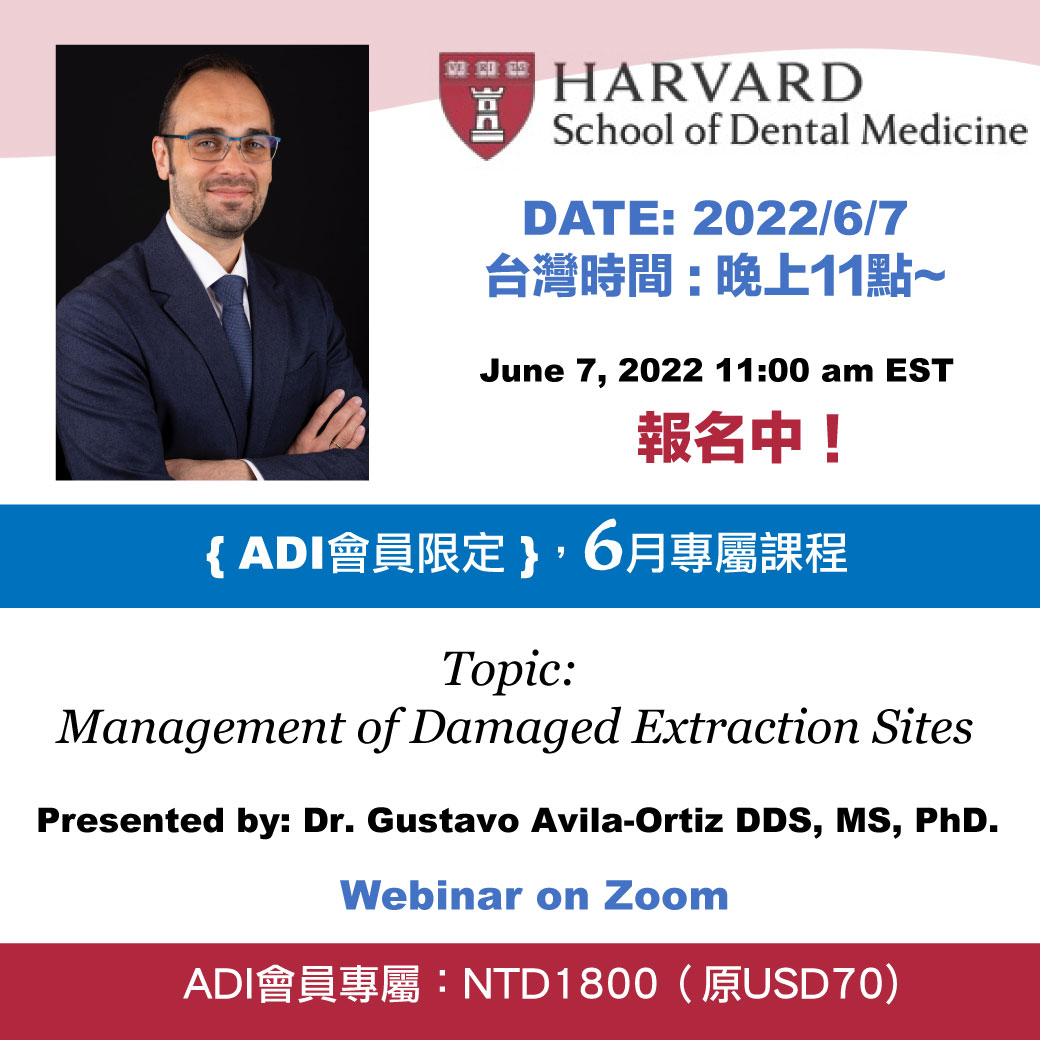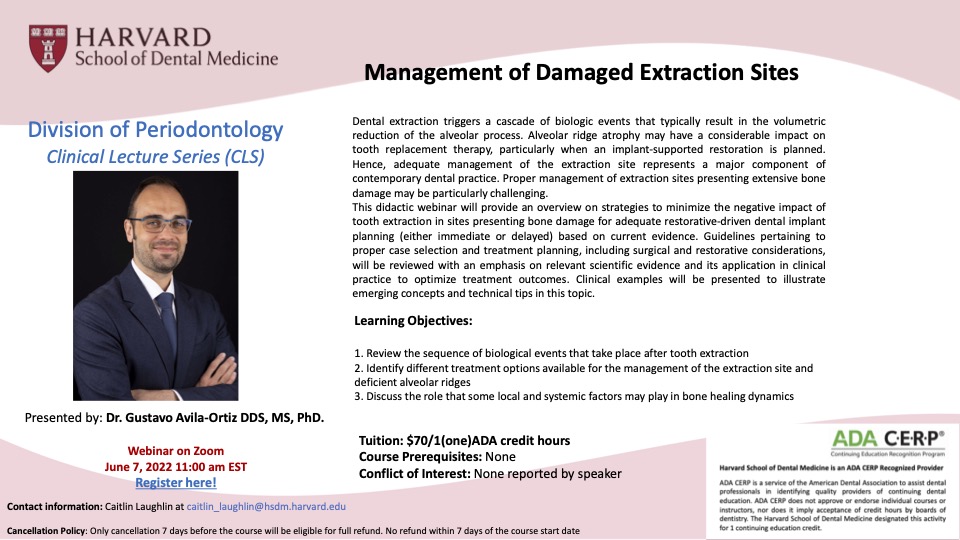
{ADI會員專屬}6/7哈佛線上課程:Management of Damaged Extraction Sites
{ADI會員專屬課程} :報名僅限本會有效會員,請登入系統完成報名&付費!
會員優惠費用:NTD1800(學校官網原USD70)
- 報名資訊

Date: Tuesday, June 7th, 2022
Time: 11am – 12pm ET( 台灣時間晚間十一點)
Title: Management of Damaged Extraction Sites
Presented by: Dr. Gustavo Avila-Ortiz DDS, MS, PhD.
課程摘要:
拔牙後引發一連串的生理反應會造成齒槽嵴的吸收。齒槽嵴的萎縮對於後續的咬合重建,特別是對計畫植牙的患者影響甚劇。因此,拔牙處的處理在現代牙科治療當中顯得非常重要。在拔牙處避免大範圍的骨頭吸收是一項具有挑戰性的治療。
此次CLS課程會概述根據實證文獻能降低拔牙區骨缺損的策略(不論針對即拔即種、或是延遲植牙的案例);提供針對案例選擇及治療計畫的方針(包含手術、贋復的觀點)以協助優化臨床上的治療結果。課程會包含實際臨床案例,讓大家清楚地了解講師想闡述的概念與技巧。
Abstract: Dental extraction triggers a cascade of biologic events that typically result in the volumetric reduction of the alveolar process. Alveolar ridge atrophy may have a considerable impact on tooth replacement therapy, particularly when an implant-supported restoration is planned. Hence, adequate management of the extraction site represents a major component of contemporary dental practice. Proper management of extraction sites presenting extensive bone damage may be particularly challenging.
This didactic webinar will provide an overview on strategies to minimize the negative impact of tooth extraction in sites presenting bone damage for adequate restorative-driven dental implant planning (either immediate or delayed) based on current evidence. Guidelines pertaining to proper case selection and treatment planning, including surgical and restorative considerations, will be reviewed with an emphasis on relevant scientific evidence and its application in clinical practice to optimize treatment outcomes. Clinical examples will be presented to illustrate emerging concepts and technical tips in this topic.
學習目標:
1.了解拔牙後,傷口處一連串的生理反應。
2.了解拔牙處傷口或萎縮的齒槽嵴不同治療處理方式之選擇。
3.討論在骨頭癒合過程中一些局部或系統性的因子所扮演的角色。
Learning Objectives:
1. Review the sequence of biological events that take place after tooth extraction
2. Identify different treatment options available for the management of the extraction site and deficient alveolar ridges
3. Discuss the role that some local and systemic factors may play in bone healing dynamics